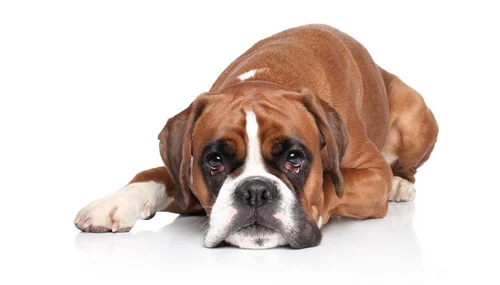
DogFoodAdvisor is reader supported See how
Dog Food Advisor is 100% impartial and is never paid to promote any brand. But if you buy using links on this page, we may earn a referral fee.
If you’re signed up to our dog food recall alerts you may have noticed several being triggered by the discovery of Salmonella in batches of dog food.
Salmonella is a widely recognized bacterial disease and mention of it often causes concern among pet parents about potential risks to their dogs. But how grave should that concern be? And does the presence of Salmonella in a particular dog food mean you should avoid that brand?
This article breaks down the truth about Salmonella in dog food and dogs, and the precautions to take to ensure safety for all the family.
How Worried Should I Be About Salmonella In Dog Food?
It should go without saying, the presence of any pathogenic bacteria is unwelcome and, as ‘pathogenic’ suggests, carries risk. However, for a healthy, happy canine, Salmonella is typically a minor issue, with the majority of dogs showing few to no symptoms.
The real concern lies in the possible transmission to humans, who are far more susceptible to the bacteria than their four-legged counterparts.
How Does Salmonella Affect Dogs?
Salmonella is a type of bacteria that infects the gastrointestinal tract. If present in dogs, they are usually asymptomatic unless they have an already weakened immune system or are a puppy. 1
However, even if a dog doesn’t show signs of salmonellosis — the symptomatic infection caused by Salmonella — they can still spread the disease through feces or saliva, which can infect humans. The type of Salmonella that affects dogs is more likely to affect humans as well, making it a zoonotic disease — a disease that is transmissible between animals and humans. 2
How Do I Know If My Dog Has Salmonella?
When the disease is seen in an adult dog, they typically have another infection or health problem at the same time. However, puppies are more likely to show symptoms of the disease whether they have an underlying condition or not.
Salmonella Symptoms In Dogs
- Severe, sudden onset, watery diarrhea
- Bloody diarrhea (hematochezia)
- Vomiting
- Lethargy
- Fever
- Decreased appetite, with or without weight loss
- Dehydration
Though rare, Salmonella can travel to the lungs, causing pneumonia, or to the reproductive tract of breeding female dogs, leading to loss of pregnancy.
If your dog is showing any of these symptoms, it’s important to take them to the vet and follow the recommended steps to recovery.
Causes Of Salmonella In Dogs
The most common sources of Salmonella are contaminated food, water, or the feces or saliva of an infected animal.
“Dogs can get Salmonella infection just like humans through contaminated foods,” says Laura Ward, DFA’s nutritionist.
“While a healthy dog is often resilient, certain factors can increase susceptibility. Age, poor nutrition, underlying conditions such as cancer, pre-existing diseases, stress, and even antibiotic treatments are all contributors that can affect your dog’s resilience against Salmonella.”
Can Dogs Get Salmonella From Raw Chicken?
Dogs can get Salmonella from raw chicken. However, it is much less likely for dogs to get ill from raw chicken than it would be for humans. Dogs are much more tolerant of raw meats than humans so infection is less likely.
Does Raw Feeding Cause Salmonella?
The ingredients used in cooked and raw pet foods have an equal probability of being contaminated with Salmonella. The cooking process and HACCP should mean that Salmonella is killed in production facilities with good hygiene and safety controls. Other means of controlling Salmonella are used in raw food processing, such as HPP.
Basically, all kinds of dog food have the potential to be contaminated with Salmonella, and proper hygiene and handling should be carried out to avoid the spread to humans.
“Washing your hands and exercising good food hygiene is important no matter what kind of food your dog is fed,” says Laura.
“Dogs which lick their owners, especially around their faces can also mean that Salmonella can be easily transmissible to their humans.
“Dogs now live more closely with humans than they ever have before, meaning that the opportunities for Salmonella and other bacteria to be passed on are many.”
Salmonella Is More Dangerous For You Than Your Dog
Even though your dog is the one consuming the contaminated food, people and other pets around the food can still contract the disease from exposure to contaminated food or their contaminated pets. 3
It’s extremely important to keep small children away from dog food at all times as little ones tend to put everything in their mouth. A recent report on one particular dog food recall stated that seven people were infected with Salmonella, six of whom were children one year of age or younger. 4
How Do Dogs Spread Salmonella?
Once Salmonella gets established in the pet’s gastrointestinal tract, the animal can shed the bacteria when they have a bowel movement, and the contamination can continue to spread through their feces.
For this reason, it’s particularly important to clean up your dog’s poop in yards or parks where people or other animals may become exposed, in addition to cleaning items in the home.
If you or your child show any signs of illness such as diarrhea, vomiting, extreme lethargy, or other concerning symptoms, consult your doctor and ensure all potentially contaminated areas are cleaned.
What To Do If Your Dog Food Has Been Recalled
If your pet food has been recalled, stop feeding it to your dog and throw it away in a secure container where other animals cannot access it. Do not donate the food or feed it to the wildlife.
It’s then important to clean and disinfect all pet supplies, including all storage containers, bowls, surfaces, scoops, bedding, toys, floors, and any other surfaces that the food or dog may have had contact with.
Clean up all pet feces and thoroughly wash your hands after handling the product or cleaning up potentially contaminated items or surfaces. 5
Should I Avoid A Dog Food Brand That’s Been Recalled For Salmonella?
While you must throw out all recalled food, it isn’t necessary to avoid the brand going forward, especially if it is honest and open about the contamination.
It might be the case that the brand regularly and thoroughly tests for pathogens, which can be a positive sign. However, if you notice repeat cases of contamination, it may be a red flag and time for a change.
How To Treat Salmonella In Dogs At Home
If you suspect your dog is infected with Salmonella, give your vet a call. They will likely ask what food your dog has consumed in recent days (it’s a good idea to keep a note of their dog food at all times — maybe by photographing the packaging) and if they have been close to any infected animals.
In most dogs who develop symptoms, providing them with plenty of fluid is usually sufficient to help their immune system fight off the infection. Treatments can include:
- At-home hydration
- Probiotics
- Intravenous fluids
- Antibiotics or steroids
- Blood transfusion
Overall, Salmonella in dogs isn’t as scary as you may think and in the rare cases where salmonellosis occurs, it’s usually treatable. The majority of the time, you won’t even realize if your dog has been infected and they will be able to fight off the bacteria with their healthy immune system.
However, if your dog’s food has been recalled or you think they are infected with Salmonella, it’s essential to take precautions to stop any spread.
Final word
The Dog Food Advisor does not accept money, gifts, samples or other incentives in exchange for special consideration in preparing our reviews.
However, we do receive a referral fee from online retailers (like Chewy or Amazon) and from sellers of perishable pet food when readers click over to their websites from ours. This helps cover the cost of operation of our free blog. Thanks for your support.
For more information, please visit our Disclaimer and Disclosure page.
Sources
Article reviewed by
Laura Ward
Pet Nutritionist
Laura studied BSc (Hons) Animal Science with an accreditation in Nutrition at the University of Nottingham, before working for eight years in the pet food and nutrition industry.




